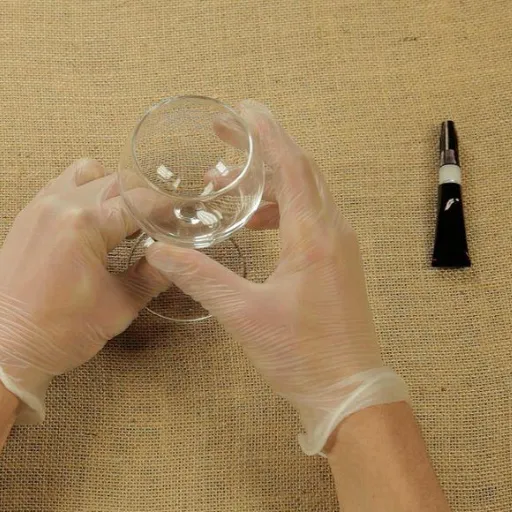Choosing the proper adhesive while repairing or making something with glass will be the factor that discriminates a flawless finish from a frustrating failure. Glass is a peculiar material that needs special glues that can make strong and long-lasting bonds as well as keep the delicate look of the material. But with the various options like super glue, and glass glue, how to decide which one is suitable for your project? The article will scrutinize both adhesives’ pros and cons in order to give insight into their proper applications and direct you in making the right choice for your glass bonding requirements. Whether it is fixing up a valued antique, or an artistic project, we will share our knowledge with you so you can attain the perfect result.
Understanding Adhesives for Glass
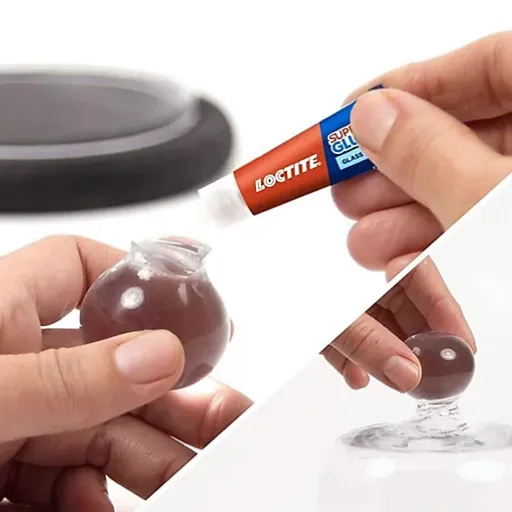
What Makes a Good Glue for Glass?
The main points to look out for when choosing a good glue for glass are bonding strength, transparency and environmental resistance. A high-grade adhesive is supposed to penetrate and hold tightly non-porous materials like glass. This guarantees that the connection stays intact when under stress or pressure.
The next and equally important point among those supposed to be taken into consideration is the transparency of the glue. Since glass has the property of being see-through, especially in decorative applications, the use of adhesives that dry clear or remain invisible helps preserve the clean and refined appearance of the whole project. Opaque or colored glues might negatively influence the aesthetic value of the bonded object.
To sum up, a good glass adhesive should be tough and resist different environmental conditions such as temperature changes, moisture and UV light. This prevents the bond from breaking down, especially for outdoor projects or items prone to wear and tear. Always use adhesives specifically made for glass to get the best results.
Types of Adhesives: Super Glue vs. Glass Glue
Super Glue and Glass Glue are both types of adhesives, but they have different strengths and specific purposes. In the case of a super glue to glass glue comparison, one must determine the projection’s requirements first. Super glue is a rapidly drying agent that also guarantees a robust connection with several materials, including glass. Nonetheless, it is sometimes unable to apply its full strength on a stressed item or in places with sudden temperature or humidity changes. Super Glue is mainly intended for indoor repairs that require speed and comfort in usage.
Conversely, glass glue is a kind of adhesive that is accurately designed for glass-binding purposes. It frequently offers a see-through, robust connection that can endure such negative factors as ultraviolet rays and dampness. Glass glue is the best option for projects where an invisible and eternal bond is needed, especially for outdoor use or items subjected to changing conditions.
In the end, it is the project itself that decides the choice between super glue and glass glue. For very small and quick repairs or non-specialized bonding, super glue can be adequate. However, for clear, strong, and transparent glass bonds even in tough situations, glass glue is the top choice. It is always a good idea to double-check the adhesive label to confirm compatibility with your materials.
Bonding Glass -Common Applications
The bonding glass is very useful in many sectors as well as in home operations. Depending on the situation, the adhesive could be the product or the key. Its application could be large architectural structures or delicate decorative pieces; in all cases, the right adhesive has to be selected to make sure that the final product is durable and of high quality.
- Household Repairs:A very common field for glass adhesives is household repair. Windows, mirrors, or glassware getting broken or cracked can very easily be repaired with special glass glue. It is reported that products like Loctite Glass Glue not only give a very strong waterproof bond within a short time but are also highly effective.
- Automotive Industry:Through installing and sealing glass, the automotive industry makes great use of adhesives. The advantages of today’s modern adhesive products, like polyurethanes, go beyond strong bonding; they also improve passenger safety. These studies indicate that adhesives of such nature support windshields that endure extreme pressures, ensuring even support during accidents.
- Architectural Applications:The architectural applications of glass bonding are still the same, i.e., frameless glass walls, glass façades, and custom windows. Silicone-based adhesives are the materials of choice thanks to their excellent performance, which includes being both durable and flexible. New reports on skyscrapers indicate the use of structural glazing adhesives, which have extraordinary strength and the capability to endure environmental changes without surrendering.
- Crafts and Decorative Uses:Crafts involving glass would be impossible without the availability of clear-drying glass adhesives like epoxy resins. These adhesives are not only reliable but also highly effective to the extent that a recent survey of craft professionals singled them out for their long-lasting performance and capability to remain transparent over time.
- Aquarium Construction:Using silicone-based glass adhesives that are fully waterproof and non-toxic after curing is a must during aquarium construction or repair. The study has found these adhesives resilient even to extreme water pressure, therefore suitable for both, small home aquariums and large commercial tanks.
- Electronics and Optical Devices:In both the electronics and optics spheres, glass adhesives have a very important role in the assembly of components like camera lenses, fibers, and screens. For this reason, UV-curable adhesives are commonly used owing to their precision and quick curing under ultraviolet light.
Understanding the various applications and ensuring that each case is handled with the right adhesive, both consumers and professionals can create glass-related projects that have a strong, trustworthy, and permanent bond.
Super Glue and Its Effectiveness on Glass
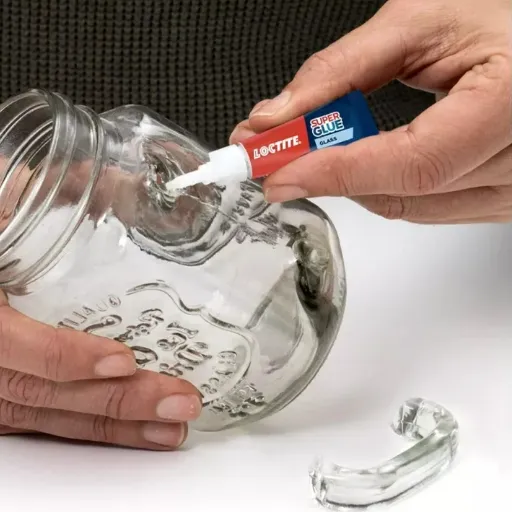
How Super Glue Works on Glass Surfaces
Super glue is often used for glass surfaces because it can bond very quickly and strongly with the application of heat or light. Through a chemical reaction called polymerization, it actually turns the moisture into those hard chains that are responsible for the strong and permanent bond. Therefore, glass can be glued very securely even in minute spaces or small fissures.
Nevertheless, the success of the adhesive on glass is dependent on some aspects, such as the glass type and the surface condition. Smooth glass may make adhesion a bit harder as there is less roughness for the glue to hold on to. To improve the performance, cleaning the surface and making sure the surface is devoid of oil, dust and moisture is usually the right course of action before applying the glue. Proper surface treatment can lift the bonding strength to a great extent.
Super glue, despite being very strong, is still preferred for small repairs or items that don’t tolerate much stress or temperature fluctuations. Strong heat or pressure can sometimes cause the bond to deteriorate over time. For giant or load-bearing glass works, specialized adhesives that have been designed for such purposes, usually for glass, may offer the desired durability and stability.
Advantages of Using Super Glue for Glass
Among glass repairs, super glue is one of the most common and preferred adhesives due to its numerous benefits. The primary advantage of super glue is the formation of a strong and quick bond. Super glue, when applied correctly, has a curing time of a few seconds to a few minutes. This is great for small, instant-requirement repair jobs like the ones on glass ornaments, small lighting fixtures, and deceptively beautiful, albeit broken, decorative pieces.
Super glue’s easy-to-use nature is another drawback. It easily bonds to different types of materials, including smooth and non-porous materials such as glass. This makes glass super glue very suitable for restoring small cracks and chips repairing nearly invisible. In addition, super glue is user-friendly because of its precision applicators and controlled flow, allowing for clean repairs.
Last but not least, super glue is inexpensive and easily found, so it is an economical option for glass repairs around the house. Super glue is mostly sold in small quantities appropriate for infrequent use, therefore, waste is reduced. Super glue may not be the best choice for heavy-duty applications or bonding joints that bear a load, but it is a great option for quick fixes and for non-structural glass bonding needs.
Limitations and Considerations of Super Glue
The foremost limitation of super glue lies in its lesser effectiveness on some surfaces and materials, especially porious ones. Super glue is the strongest on non-porous things like glass, ceramics, and metals, but it may not be as strong of a bond when applied to wood, fabrics, or certain types of plastic that are repellent to strong adhesion. In such cases, it would be better to use a different type of adhesive for the materials that are difficult to adhere to.
Besides that, one more vital thing to consider is that super glue is highly sensitive to environmental factors. The bond may progressively weaken when exposed to high humidity, moisture, extreme heat, or UV light for a long time. Epoxy or silicone-based adhesives are usually a more durable and dependable option for outdoor or high-humidity applications. Moreover, super glue may give off a pungent smell and cause skin to become irritated if not utilized in an area with good ventilation.
Moreover, it is always best to take safety precautions whenever one is dealing with super glue. If skin contact is prolonged, the person can accidentally bond the affected area and suffer from irritation, therefore, the use of protective gloves and careful handling is recommended. Super glue can also be a threat to children and pets if it is not supervised since it dries fast and has a strong bond. Proper storage in a sealed container away from heat and out of reach of kids will ensure both safer handling and longer shelf life.
Glass Glue: A Specialized Solution
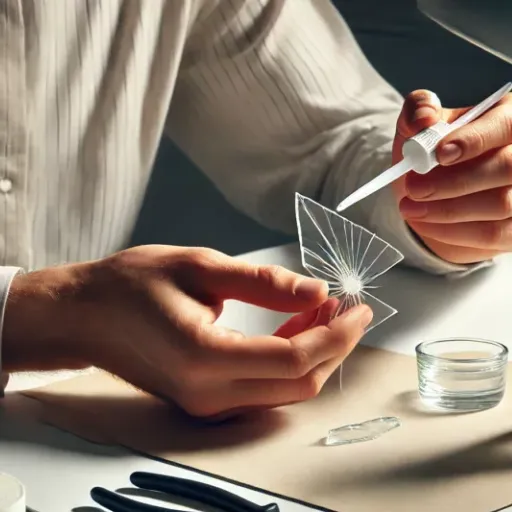
What is Glass Glue and When to Use It?
Glass glue is an adhesive that is specifically made for and very effective in bonding glass surfaces. It creates the bond by allowing the glass to stick to each other and thus becomes invisible most of the time. Glass glue is very strong and can even withstand water, heat and UV rays making it the best solution for the variety of applications from repairing glass items that have broken into pieces to fixing up all that has been shattered about the house and also to craft work where glass materials are involved, among others.
The main benefit of glass glue lies in its ability to bond without leaving any visible mark hence together with the glue the glass gets the very same clarity and beauty. Generally, it is used for such projects where a strong and discreet bond is required, e.g. glassware, glass furniture or certain light fixtures. Some types of glass glue are further adaptable to stick glass with other materials like metals or ceramics thus providing a broader scope of functionality for repairs and creative use.
Proper use of glass glue starts with cleaning and drying the glass surfaces as the adhesive is to be applied. Adhering to the manufacturer’s instructions closely will assure the best outcome, including using the right amount of glue and giving enough curing time. Glass glue should also be kept in a way that its efficacy will not be compromised, that is in a cool dry place away from direct sunlight. The way glass glue is applied and handled will determine whether it will be a reliable solution for glass repairs and crafting needs or not.
Benefits of Glass Glue Over Super Glue
Glass glue is made for and stronger than super glue. It can be used on glass only, and it accommodates the unique properties of glass. Even when conditions are not ideal, super glue may turn brittle and lose its effectiveness, whereas glass glue is designed to give a reliable, strong bond for a very long time.
- Resistance to Heat and Moisture:In comparison to super glue, glass glue usually has better resistance to heat and moisture. To illustrate, products like Loctite Glass Glue are made to endure high temperatures and water without weakening the bond. Therefore, it is the best option for the repair of glassware, aquariums, or windows.
- Clarity and Aesthetic Quality:The main advantage of glass glue, among other things, is its feature that the glue of glass dries up clear thereby giving an almost invisible bond. Super glue is also quick-drying but it can sometimes leave a foggy or opaque residue which will not be good for the visual appeal of glass surfaces. Glass glue assures a perfect blend with the material at the end of the process.
- Resistance to UV Light:Silicone or epoxy-based adhesives are included in the compositions of many glass glue formulations making them UV-resistant. It also means that the adhesives are less likely to become yellow or degrade during the process of being exposed to sunlight for a long time. So, they are the best choice for outdoor applications such as glass fixtures or decorative pieces.
- Life Span and Toughness:Glass glue has specific bonding agents that work great with glass, like silicone adhesives, so you can expect a bond that’s going to last forever. Studies indicate that the usual tensile strength of premium glass adhesives is remarkably higher than that of standard super glue, thus a more lasting repair.
- Tailored Applications:Glass glue is preferably used in situations where the glass surface is curved or uneven as it provides flexibility and has gap-filling features. Super glue finds it difficult to work on these types of surfaces since it lacks the elasticity to conform to them. Glass glue, on the other hand, can do even the most delicate and intricate fix quite easily.
Thus, by giving a bond that is more durable, heat-resistant, and aesthetically superior, glass glue has proved to be a specialized and productive solution for the repairing and connecting of glass that has outperformed super glue by a long margin in several aspects.
Best Practices for Using Glass Glue
To utilize the glass glue in the right way some basic but very important steps need to be followed which can guarantee a strong as well as a long-lasting bond. Firstly, the cleaning of the surfaces you are going to glue together is a must and it should be done very thoroughly. Dust, grease, and other particles should be taken away with a cleaning agent that is gentle and the area should be completely dry before the application. It is the clean surfaces that encourage the glue to bond correctly and thus produce a more robust bond.
After that, the glue is to be spread out uniformly on one of the surfaces while observing the manufacturer’s instructions about the quantity as well as the way of application. Do not use too much glue as it may result in bonds that are not even and may cause a mess. After gluing, bring the surfaces together and press them very tightly and keep them that way for the suggested time. This procedure causes the bond to be very strong and at the same time reduces the chances of being out of alignment.
At last, let the product cure for the time suggested as that is the only way it can become the strongest and most durable. During this time, do not put any stress on the bond, and do not let it be subjected to extreme heat or cold or moisture. When these best practices are adhered to one can get results of professional quality when using glass glue which makes it a very useful tool in various glass repair and assembly projects.
Preparation and Application Techniques
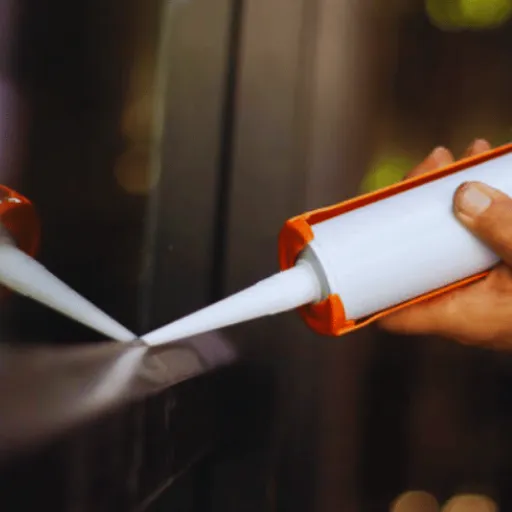
Prologue of editing surface at glass to acquire a better bonding
It is significantly important that the glass surfaces are prepared correctly in order to get a strong and long-lasting bond. First of all, the glass surfaces should be cleaned perfectly and the cleaning should be done in such a way that no dirt, grease, or even small particles that might interfere with the process of adhesion are left behind. It is advisable to use a clean, lint-free rag and a suitable cleaner, for example, a mixture of water and a small amount of detergent, which is then followed by rinsing with clean water. The glass must be completely dried up before proceeding, for moisture will hinder the glue’s performance.
After that, check the surfaces of the glass for any defects such as chips or cracks around the area where the bonding will take place. In case of such defects, smooth or repair them since non-uniform surfaces can result in a weak bond. A very fine sanding can be done on the area where glue is to be applied for better results. The sanding will create a surface that is not totally smooth and this will in turn help the adhesive to grip the glass better.
One thing that should be kept in mind is not to touch the areas that have been prepared with fingers, as the natural oils from the skin can impair the performance of the adhesive. If it is possible, put on gloves during the whole procedure and place the pieces of glass carefully before applying them to ensure that they fit well. By adhering to these instructions, the glue for glass will be at its greatest effectiveness, thus providing a bond that is both safe and durable.
Application Techniques for Super Glue and Glass Glue
Super glue or glass glue application requires the utmost care in making sure that the surfaces to be glued together are clean, dry, and free of any dust, grease, or other contaminants. Cleaning the bonding areas with warm soap and water or an alcohol-based solution and then airing them out completely before proceeding to the next step is a must. This preparation is the foundation of forming a strong, long-lasting glue connection.
The process of application involves putting a tiny dot of glue on one of the surfaces only. Do not apply more than needed, as too much glue can make the bond weaker or the area dirty. After the glue has been put on, press the parts together very tightly and keep them in that position for the time indicated in the instructions that come with the product. Getting the pieces aligned properly at this point is very important because there may be no way to correct it if you try to change it after the bonding.
Finally, let the glue harden completely before you try out the joint. Take the curing time mentioned in the product label carefully, as some adhesives demand numerous hours to reach their top strength. Storing the glued item in a quiet place which is not subjected to vibrations or fluctuations in temperature is also a good practice. By applying these simple yet powerful techniques, you will have assured yourself a bond that is not only strong but also long-lasting.
Drying Times and Curing Processes
Adhesives are basically no good without taking into account their drying times and curing processes. Drying time is the time that passes for the glue to lose its sticky feeling and touch-dry, that is, it is still wet in the middle. The pieces are kept intact just for the time being by the initial bonding, even if the glue hasn’t fully set. And curing is the complete hardening of the glue, during which it is endowed with the highest strength and durability. Hardening takes longer than drying and still depends on a lot of things like the heat, the moisture in the air, and the kind of glue used.
In fact, proper curing for the majority of adhesives may take anywhere from hours to days to the material and surroundings. Some adhesives dry up in 30 minutes but demand a curing period of 24 to 48 hours for optimal effectiveness, for instance. High humidity and lower temperatures may decelerate this process whereas changing the conditions to be the same all the time can speed it up or keep it the same. The package directions always have to be checked for the specific timeframes and recommended conditions to get the best results.
If you want to get a better bond, then the item should not be disturbed during the drying and curing stages. Movement can cause the bond to be weakened before it has set completely. Besides, it is a good idea to keep the item in a place that is free of dust and has a constant temperature because the very hot or cold conditions may cause the glue to fail. When you respect both the drying and curing processes you will be able to form a solid and permanent connection that is perfect for your project.
Dealing with Broken Glass: Tips for Repair
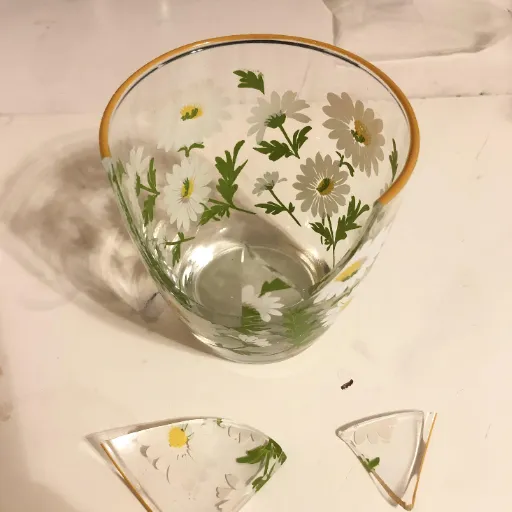
How to Glue Glass Together Effectively
Gluing glass effectively starts with cleaning the two surfaces and making them dry and free from any dirt, dust, or oil. It is advisable to clean the glass using a combination of soap and warm water or rubbing alcohol, after which thorough drying is a must. A shiny and clean surface is a great condition for the adhesive to bond perfectly.
After that, choose an adhesive that is meant for glass repair specifically. These adhesives are very good to work with, because they bond glass and other smooth, non-porous surfaces and also provide a strong and invisible finish. The next step is to take a very small amount of adhesive and apply it evenly to one of the surfaces, then the pieces need to be pressed together very gently yet quite firmly. Be careful not to apply too much glue, as it will ooze out and cause an uneven or messy bond.
In the end, give the adhesive enough time to set and cure. Manufacturer’s instructions for drying and curing times should be followed, because if you hurry this process the bond will get weaker. For the duration of this process, keep the repaired item in a stable and dust-free environment. By doing so, you will be able to get a very strong and invisible repair for your glass items.
Common Mistakes to Avoid When Gluing Glass
- Not Cleaning the Glass Properly:Among the most frequent mistakes, one may count not cleaning the glass adequately. If there are any traces like grease, dirt, or fingerprints, they will not let the adhesive bond properly and it will be weak. Studies say that cleaning the glass with a mixed solution of isopropyl alcohol and water gives a surface that has no residue on it. You should always make it a point to let the surface dry entirely before the beginning of gluing.
- Using the Wrong Adhesive Type:Not every adhesive is appropriate for glass. Glues for general use might not be able to give a strong or long-lasting bond. Experts say that epoxies, silicone-based adhesives, and UV-curing glues are usually the best choices for glass repairs. You should read the product labels carefully to make sure that the adhesive is suitable for glass.
- Failing to Use Enough Adhesive:It is always bad to use too much glue but at the same time, using too little can also ruin the bond. You should always apply an even layer of adhesive that is enough to completely cover the joint area. Studies show that one of the main reasons for breakage in repaired glass items is the unequal distribution of glue.
- Ignoring Manufacturer’s Instructions:Usually, homeowners do not pay attention to the specific drying and curing times given by the manufacturers. If you hurry up this process, you will end up with weak bonds. Studies indicate that curing time–which can be anywhere from a few hours to 24 hours depending on adhesives—has a large bearing on the final strength of the bond.
- Failing to Align the Surfaces Correctly:While gluing, the wrong arrangement of surfaces can result in bonds that are not even or traces of the adhesive that are visible. The professional recommends using clamps or adhesive tape to keep the glass parts locked in position until the adhesive dries.
- Using Adhesives in an Unsuitable Environment:Moreover, the situation in which you put on the adhesive also plays a great role. For example, high moisture or constant changes in temperature can spoil the glue’s effectiveness. The top temperatures for gluing glass are usually 50°F to 85°F (10°C to 29°C), according to leading adhesive manufacturers.
If you steer clear of these common mistakes and adhere to the best practices, you are guaranteed to get a very strong, seamless, and professional-looking result when sticking glass.
When to Seek Professional Help
Should you face difficulties while trying to attach glass with glue, it is very crucial to know the exact moment when it is advisable to get a professional to help you out. One of the situations where it is a must to call for an expert is when the glass you are dealing with is highly priced, such as antique items or designer glass. A wrong move or poor use of the adhesive may result in permanent damage. Experts are the ones who have the needed skills and equipment to perform such intricate tasks to perfection.
Moreover, the situations involving breakage that are not straightforward of glass, for instance, jagged edges and areas where the glass has been destroyed, it is still better to rely on help. The repairs done on complex breaks need to be so accurate that only the professionals would be able to do it. They also have access to specific bonding agents and techniques that are made for particular cases, so the bond created will be stronger and more durable.
Lastly, if safety becomes an issue like in the case of glass in an overheated or structurally critical situation, such as windows, aquariums, or glass doors, then you must unconditionally seek professional help. Repaired glass that is in such a situation can create dangerous scenarios, breakage or injury, among them. The experts are the ones that can work in these types of settings making sure that the repairs are both secure and long-lasting.
Frequently Asked Questions (FAQ)
Q: Does super glue work on glass?
A: Yes, super glue, especially cyanoacrylate glue, works very well on glass. It connects very strong pieces of glass and it’s also great for tiny glass repairs.
Q: How do I choose the best glass glue for my project?
A: The right glass glue should be a product explicitly formulated for the glass surfaces, among other things. Bear in mind the properties such as viscosity and drying time, and whether the adhesive is waterproof, especially if the project might be exposed to moisture.
Q: Can I use super glue on phone glass?
A: Super glue can be used on phone glass, but it is very important to check that the surfaces are perfectly matched. For large areas or structural repairs, a two-part epoxy or specialized glass glue is recommended.
Q: How do I clean surfaces before applying super glue on glass?
A: To get rid of dust and grease, you should clean the surfaces with a glass cleaner. After the glass has been cleaned, let it dry completely before applying glue for the strongest bond.
Q: What should I do if I get excess glue on the glass?
A: If you happen to have glue in excess, you can either use a razor blade or a damp cloth to take it off gently before it dries. Remember to be extra careful not to scratch the glass while doing so.
Q: Is super glue water-resistant for outdoor use?
A: The majority of super glues including cyanoacrylate ones and others aren’t completely waterproof. To ensure that outdoor projects last long even in the rain, use a waterproof or weatherproof glass glue.
Q: Can I use acetone to remove super glue from glass?
A: Acetone can indeed remove super glue from glass surfaces, and it does so quite effectively. But apply it with a cloth and take care since it can ruin certain finishes or coatings on glass.
Q: How can I hold glass pieces together while the glue sets?
A: Hold the glass pieces together with clamps or tape while the bond is being formed. Moreover, be sure to do the work in a well-ventilated area to avoid any inhalation of glue fumes.
Q: Are there alternatives to super glue for repairing glass?
A: Yes, E6000, which is a multi-purpose adhesive and a two-part epoxy, which is particularly suitable for larger or more complicated repairs due to its strong bonding, are the main replacement.
References
-
Loctite – Glass Glue: How to Choose the Best Glue for Glass – Discusses Loctite Super Glue Glass, which is specifically designed for glass bonding and dries transparent.
-
Loctite Products – Glass Glue: The Best Glue and How to Use It – Explains the limitations of standard super glue for glass and provides recommendations for specialized glass adhesives.
-
Facebook Discussion on Glass Repair – A community discussion about the best adhesives for repairing glass, including user experiences with Gorilla Glue and E6000.
















